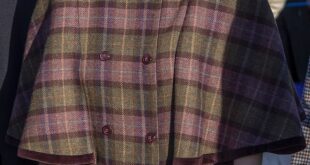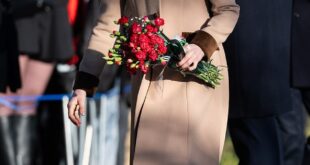From delivering mail to the aircraft carriers to monitoring the frozen Antarctic and spotting wildfires, Windracers’ ULTRA is pushing UAV boundaries, as JACK RICHARDSON reports.
With the growing number of aviation challenges today, ranging from ensuring affordability to minimising impact on the environment, many solutions are sought from the world of uncrewed systems. While several take the form of quadcopters or multicopters, one company is addressing several challenges with a fixed-wing solution.
Founded in 2017, Windracers offers a twin-boom, twin-engine UAV, designed to act as what the company terms a ‘Jeep of the skies.’ Windracers’ aircraft, named Uncrewed Low-Cost TRAnsport (ULTRA) measures 20ft by 30ft and is the brainchild of Stephen Wright.
Early success
The prototype ULTRA ahead of its maiden flight in 2019. (All via Windracers unless stated)
Performing its maiden flight in 2019, it was used to deliver medical equipment to isolated areas of the UK, including the Isle of Wight and the Isles of Scilly under the UK government’s Future Flight Challenge just a year later.
According to Rob Datson, a former RAF Tornado F.3 pilot and now Chief Flight Operations Officer at Windracers, the ULTRA’s development was accelerated by the pandemic as government, regulators, business and the public became aware of the possibilities afforded by UAVs. Earlier this year, the UK government released its Future Flight Action Plan, which cited improving NHS efficiency as an example of flight innovation in the country.
Speaking to AEROSPACE, Datson said that he felt Windracers differs from its competitors because he, and many other employees, have an aviation, instead of technology start-up background. “We are a drone company as that is [the] best solution to the problem,” he said.
Total automation

Windracers has designed the ULTRA to be compact but capable.
Another major difference with the ULTRA is the way in which it is operated. Instead of being remotely piloted by satellite, as in the case of the MQ-9 Reaper, the ULTRA offers a totally automated service from take-off through to landing, thanks to its patented Masterless control technology. The company developed this simply because it could not find software on the open market that was of sufficient quality.
Test pilot, Nathan Gray, a retired Royal Navy Sea Harrier pilot, who recounted his experiences testing the F-35 Lightning II in his memoir, Hazard Spectrum, talked AEROSPACE through the various challenges in developing the system.
A particular issue has been the cost of developing and fielding a UAV that could conduct the required functions at an affordable price. Therefore, Windracers, which currently employs 60 people plus contractors, has developed as much of the structure of the aircraft in-house as possible, with a limited number of internal structures imported from India, prior to final assembly near the firm’s Southampton headquarters.
In growing, the company has taken inspiration from the automotive industry with its Chief Operating Officer having been recruited from car manufacturing giant, Honda.
Hands-on operation

ULTRA has been used to demonstrate Royal Mail postal flights from mainland Scotland to the Orkney Isles. (Royal Mail)
Another challenge has involved ensuring the safety and reliability of the aircraft. Currently, an ULTRA has to be manoeuvred into position by an operator on the ground before the automated take-off and flight can be engaged, as required by UK CAA rules. At the other end of the sortie, an observer will be on-site to ensure a seamless landing and marshalling to the final area. However, there are plans to streamline this further as the company and its aircraft branch out into a wider variety of sectors. Ensuring reliability has been a priority from the start with large levels of redundancy incorporated in the event of a hardware or software failure.
Rugged and utilitarian

Operating to the Orkneys from the mainland, the ULTRA proved capable of carrying payloads over large distances. (Royal Mail)
For all of its sophisticated technology, Datson describes the ULTRA as “Rugged and highly utilitarian.” Wright first envisaged the UAV as a system for delivering humanitarian aid to isolated locations, transporting payloads weighing more than 100kg over distances greater than 1,000km.
This is something that Windracers claim can only be done in an efficient and cost-effective way, which is not the case when using conventional helicopters or ground convoys. A promotional video on the company’s website depicts the UAV being loaded by hand in a field before taking off autonomously and dropping emergency food parcels over where they are needed. Alongside this airdrop capability, the animation demonstrates the UAV carrying out a short landing on a 150m rough strip, potentially surfaced with tarmac or perhaps just grass, ice or sand.
Windracers is in talks with the World Food Programme to offer its services to deliver supplies to famine spots around the world from later this year, fulfilling its original purpose.
ULTRA at sea

Operations aboard HMS Prince of Wales, during which the ULTRA became the first non-STOVL fixed-wing aircraft to land on the carrier. (Crown Copyright)
Away from the humanitarian aid sector, one area where the ULTRA has started to show potential is in the defence arena.
Ever since entering service, the Royal Navy’s Queen Elizabeth class aircraft carriers have lacked the capability to recover large, fixed-wing, non-STOVL, aircraft. The decision to deploy the F-35B using a ski-ramp deprives the Navy of the flexibility enjoyed by the US Navy which uses catapults and arrestor gear to launch and recover fixed-wing aircraft.
As part of its Future Maritime Aviation Force roadmap into the next decade and beyond, the service has wide-ranging plans to utilise UAVs in roles from EW to AEW. During September 2023, Windracers took part in the MoD’s Heavy Lift Challenge using the ULTRA, branded HCMC, and in the process became the first fixed-wing UAV to land on the Queen Elizabeth class carrier (of note, it was Nathan Gray who made the first F-35B landing on the carrier).
The HCMC mission involved the UAV utilising its autonomous capabilities to take off from Predannack, a satellite airfield near RNAS Culdrose in Cornwall, and land on the carrier HMS Prince of Wales before departing again. The trial was done before the ship departed to the US for trials with the MQ-9 Mojave (a Reaper variant).
On this occasion, ULTRA carried a cargo of mail for the sailors and returned with a water sample from the ship. Going forward, it is hoped that the ULTRA can fulfil routine tasks, such as this, freeing up higher-value carrier assets – such as Merlin and Wildcat helicopters – for their core tasks of defending the battlegroup. Although there are currently no plans for an armed variant of the ULTRA, Gray added that the aircraft will be able to carry out the resupply role in the context of dispersed land locations as this doctrine becomes popular again.
Antarctic ops

The British Antarctic Survey has been using the ULTRA to support logistics in the region and to help in its core research tasks, operating from Rothera Research Station. (British Antarctic Survey)
Away from military applications, the pitching deck of an aircraft carrier is not the only extreme climate the ULTRA has ventured into. The British Antarctic Survey has used the ULTRA not only to break its dependence on a small fleet of crewed aircraft for logistics, but to help in its core research tasks. A major challenge in Antarctic research is not only the extreme nature of the climate, but the extensive distances involved. The last decade has seen significant advances in ‘swarms’ of UAVs, and Windracers has been keen to exploit this trend. In an interview with Air International magazine, the company explained how it would task several of its ULTRA airframes to simultaneously fly over the Antarctic ice sheet, measuring its status and monitoring any movements. During this process, 3,000km was covered autonomously, carrying seven different loads.
As this deployment shows, UAVs open many new possibilities. According to Dr Anna Jackman, Lecture in Human Geography at the University of Reading, they also enable environmental benefits through reduced carbon emissions, as well as saving money and improving situational awareness, as set out in her report UK Commercial Drone Industry: Professional, Responsible and Considerate Drone Use. In his interview about the Antarctic deployment, Datson said that the ULTRA’s use resulted in a 90% reduction in fuel burn and emissions, compared to crewed aircraft. In addition, the sorties over Antarctic were monitored and controlled from commercially available computers acting as control stations in the UK.
Windracers recently enjoyed further success in this sector with Norway’s NORCE scientific research institute ordering two examples for its operations. This comes as part of the independent body’s upgrade of its facility on Troll, where the aircraft will be used to deploy sensor payloads to monitor the environment.
Wildfire spotter

Windracers ULTRA undergoing trials from the former RAF base at Llanbedr in North Wales.
Going forward, the company is looking to offer the ULTRA to provide a similar service with another pressing environmental issue: wildfires. Recent years have seen more prolonged and more ferocious fires all over the world and there is a clear space for UAVs to help meet this threat.
To this end, Windracers sees potential for the ULTRA to enhance situational awareness and prevent wildfires. If fires do break out, traditional crewed fixed-wing aircraft and specially adapted helicopters and amphibians are deployed to drop water. In these cases, Windracers sees a role for the ULTRA operating in the overhead to provide real-time situational awareness updates, ensuring the other assets can be deployed in the most efficient manner.
In November 2020, Windracers was selected by the UK government, funded by its Industrial Strategy Challenge Fund as part of its Future Flight Challenge, to accelerate its SWARM technology. Carried out in partnership with Bristol University’s robotics lab, SWARM will allow multiple UAVs to cover large areas to improve wildfire situational awareness and, according to Gray, drop fire suppressant if necessary. In September 2024, it was announced that Windracers had, along with its partners the Universities of Bristol and Sheffield as well as Lancashire Fire and Rescue Service, been selected as a qualified team in XPRIZE Wildfire Track B. This is an initiative for teams to demonstrate how UAVs can detect wildfires and then use AI to coordinate their responses.
The middle mile

Easy loading and unloading is combined with an air drop capability if required.
As UAVs have proliferated the civilian sphere, one of the areas with the most potential is postal deliveries covering the so-called ‘middle mile’. This is the stage between the sender’s post reaching the sorting station and needing to be moved to another nearer to its destination. The middle mile can often involve logistics bottlenecks, such as maritime infrastructure, conventional airports and unreliable roads, so Windracers feels there is an apparent need for the ULTRA’s automated ability to move post between sorting stations.
The vehicle has already proven itself in this area during 2021 by delivering post from Land’s End in Cornwall to the Isles of Scilly, where the Royal Mail experimented with smaller drones to take the cargo to its destination. This was followed later that year with the ULTRA delivering mail from the Scottish mainland to the Orkney Islands under the UK government’s Sustainable Aviation Test Environment and Future Flight Three.
Self-flying AI lab

Windracers has teamed up with Purdue University Airport to create the AI for Digital, Autonomous and Augmented Aviation (AIDA3) project. The aircraft performed its first flight in the US on 15 April 2024.
With operations in these challenging scenarios under its belt, Windracers is now looking further afield to deploy its product. In April 2024, the company announced a partnership with Purdue University Airport in the US to establish the world’s first self-flying AI lab.
The AI for Digital, Autonomous and Augmented Aviation (AIDA3) will help Windracers gain a foothold in the US market and, as part of the agreement, the company will provide two examples of its ULTRA UAV to the programme. These will further push the boundaries of AI and machine learning at a facility with close ties to the US military which counts Amelia Earhart and Neil Armstrong (after whom the supplied UAVs will be named) among its alumni.
The aircraft performed its first flight in the US on 15 April and the next step involves moving towards full FAA certification. To build on its achievements and enhance its offering to customers, Datson explained that the aim of this collaboration is to develop AI technology that will allow one person to control multiple ULTRAs, something particularly relevant in the context of the UAV being used to monitor large wildfires.
Future plans

Windracers’ focus at present is extracting ever-greater performance from the ULTRA.
As for the future, Wright has been quoted as saying Windracers is planning to improve the ULTRA’s engine, boosting its output by 80%. Although he has not ruled out building a larger UAV in the future, Wright has stressed his company’s emphasis for now is on extracting the maximum performance from the existing ULTRA.
As this article was being prepared, it was reported that Windracers’ UAVs were now operating in Ukraine. Although the company did not want to discuss this with AEROSPACE, reports elsewhere stated that the system had been procured by the UK as aid for its ally and has been conducting intelligence, surveillance, and reconnaissance and supporting resupply for the armed forces of Ukraine since 2023.
Going forward, Windracers is planning for the ULTRA to make its first flight using synthetic fuel in the third quarter of 2024. With an increasing number of clients in an ever-wider variety of sectors – and continuing to post tantalising glimpses of its future plans on social media – it is clear that Windracers’ journey has only just begun.
Source link



